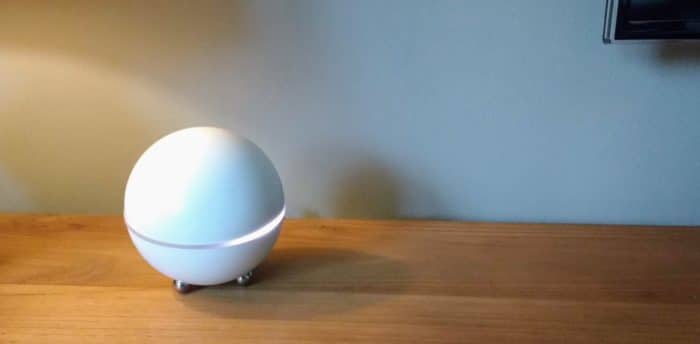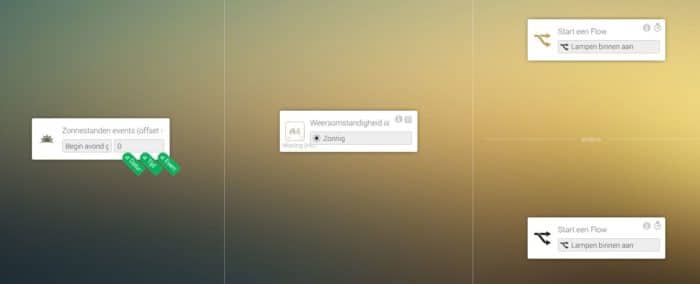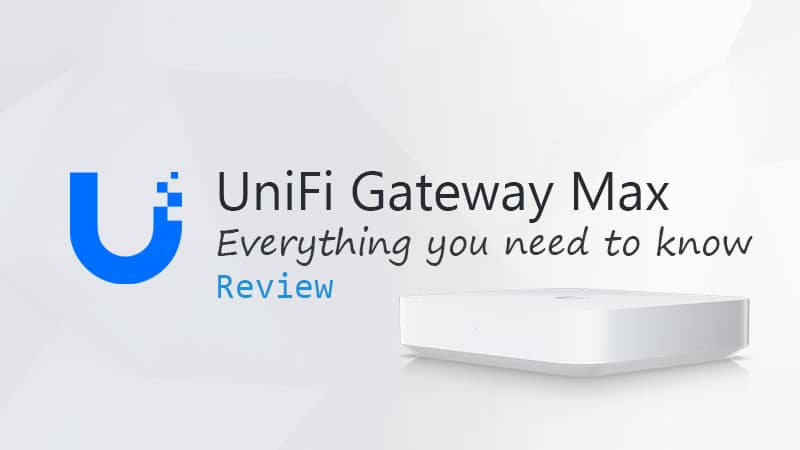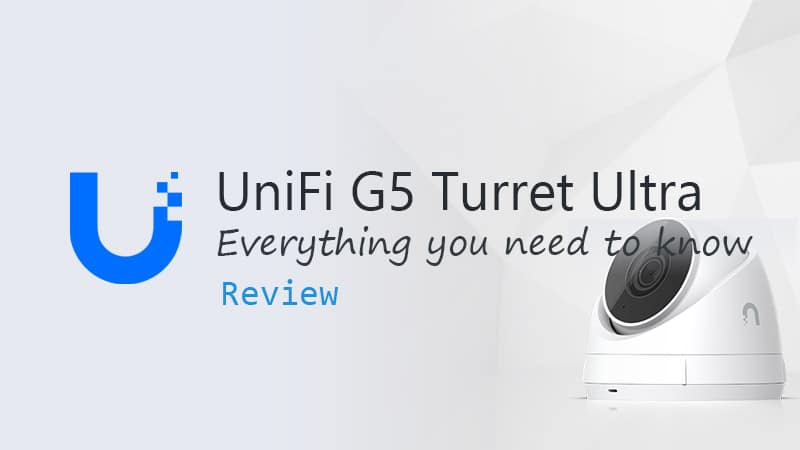I am an IT guy, and hence the name of my blog, LazyAdmin, I like to automate as much of the boring daily tasks as I can. So that is what I did with my home. In this post, I will try to help you get started designing your own Smart Home. Where should you start, what do you need to buy first, and some smart home tips that you should keep in mind.
Now I am an IT guy, but if you want to great your own Smart Home these days you don’t need any IT or programming skills! You can connect the most smart products with only pressing a few buttons.
Making a real smart home
Before we go to designing our smart home, let me first point out a really big difference in smart homes and real smart homes. In my opinion, Alexa or Google Home does not make your home really smart. These devices are really user-friendly and easy to use but are also limited to the automating part. To turn the lights on with Alexa, you need to say “Alexa, turn the lights on”. That’s not smart, I don’t “think” for itself. Alexa, Google home and Apple’s Siri are virtual assistants that can perform a task for you if you ask them.
Smart means event based actions. The sun is getting down in one hour, is it cloudy outside? Yes, turn the lights on. No? Let’s wait for an hour, and then turn the lights on. Nobody home, turn the lights off at 23:10, is there a guest device connected to the wifi? Then there might be a babysitter at home, keep the lights and heating on.
That is smart, you set the rules, the guidelines, and the device acts on it. That is how I made my house smart. If I turn the TV on after 20.00 for example, the lights in the living room get dimmed. If I have the doors to the garden open and it’s outside colder then inside, then turn the heating off (and maybe send me a push notification .. )
Designing your smart home
When you start with the design of your smart home you only really need to think about which protocol you are going to build on. Besides WiFi, which is mainly used for bigger devices like the thermostat and smart hub, you will have to choose between ZigBee and Z-wave.
A WiFi network has a star topology, which simply means that every device connects to one central device (the access point). The WiFi signal is strong and can transport a lot of data. For smart devices you want to use as little energy as possible, the devices are small, so the battery is too. Besides that, you don’t have much room for a decent antenna.
Now there are a lot of smart devices that use the WiFi network. The advantage is that you don’t need a Smart Hub for them and you can control them with an app. But the WiFi network is already pretty crowded, which could cause interferences to result in a non-responsive smart device. Also, the WiFi protocol requires more energy.
Zigbee and Z-Wave are using a mesh-topology, this means that every device can connect to another, extending your network through your house and even garden. This way your network can extend further throughout your house and is more reliable.
Zigbee vs Z Wave
While they might look the same, there are some big differences between the two protocols. The Z-Wave network only supports up to four hobs, (devices), between the controller and the device itself. Zigbee supports unlimited devices, so you can build a bigger mesh network with it.
But the downside of Zigbee is that it is operating at the same crowded frequency as WiFi, 2.4Ghz. This means that Zigbee can suffer from interference from other Wifi devices. Also, a higher frequency means less distance the signal can travel. Z-Wave, on the other hand, operates around the 900Mhz (depends on your location), allowing the signal to travel up to 300 feet in an unobstructed view.
Now you don’t have to really pick one protocol, because every smart hub supports multiple protocols. But the more devices you add to one mesh protocol, the more reliable and stronger it gets. A good practice is to keep with one protocol for your lights and wall plugs. These are the devices you will have the most of and are spread throughout your house. The Zigbee lights tend to be cheaper, but the Z-Wave protocol is more reliable, has less interference and a greater signal strength.
Smart Hubs
You can buy “smart” lights that you can control from your mobile phone. And yes, you can easily turn them on off all at once, or change the brightness. But those that make them smart? I would like that the lights are turned on when it gets dark, or that they turn on when I come home. Also, I don’t want to be stuck to one brand, so what you are looking for is a controller that supports a lot of different protocols, Z-wave, ZigBee, wifi, Bluetooth, 433mhz, infrared etc.
A controller, or hub, is a device that allows you to create flows / routines / actions that happen after a certain trigger or event. A hub will connect all the devices together, making your house smart.
Some of the best Smart Hubs
I backed the Kickstarter project of Homey in 2014 and I am still really happy with it. Homey is a real smart hub, while Google Home or Amazon Echo are really virtual assistants. The downside of Homey is that the voice control is not working as smooth as with Google Home or Amazon Echo. (But you can solve that by linking an Amazon Echo to your Homey). On the positive side, Homey has a large community which results in a lot of apps created for Homey. This way Homey is able to talk with more than 40.000 devices included a Tesla 😀 (not that I own one though.. )
Other devices where you could look into are the Smartthings hub from Samsung or the Wink 2. I don’t have any experience with either of them, but both of them support a lot of different products and allow you to create some basic events. If you are looking for something similar to Homey, you should really look at Hubitat. It was release at the beginning of 2018 and looks really promising.
I will try to get my hands on one later, but the specifications and possibilites of the Hubitat are great and really similar to Homey. What I really like at first glance is that it, just like Homey, can run completely offline and support more advanced rules. The price is also really great, I found it on Amazon for only $ 149,-
The thermostat
If you are starting with your smart home, you really should start with a smart thermostat. You will earn it back easily in a couple of years. There are many great smart thermostats available these days but a few things what they really need is geofencing and multi-user support. Also, a great addition would be open window detection, but I have to say, a door sensor is more reliable in my experience. If you want to know more about Smart Thermostats and my opinion on some of them, you should really read this post.
I bought my first Tado thermostat in 2013 and last year, after we moved to a new house, I bought a new one. Tado has done a great job in creating a simple to use device and app, with some powerful energy saving options. The geofencing feature is working really nice, it lowers the temperature depending on how far you are away from the house. When you get closer it will start heating slowly so you always enter a nice and warm house. You can change these settings according to your own preference. For more information about Tado you should check their website or read my post about Smart Thermostats
Lights
Smart LED light bulbs are getting really cheap and are a no-brainer to buy when it comes to making your house smart. We all know the Philips Hue lights, but they are quite expensive. A really good and affordable smart light bulb is the Ikea trådfri series. Smart lights are pretty simple, every brand has it own controller to start with, some can be controller with you mobile, other with a central controller.
But as stated earlier, that isn’t real smart. If we connect the Ikea lights with Homey, for example, you can create flows that will turn the lights on when it gets dark. Without any command or input from your end.
Let’s take a look at one of the many flows in my Homey:
This flow looks pretty simple, and it’s actually. On the left, we got the trigger, which is an app for Homey that gets the sun position like the golden hour, start sunset, start sunrise etc. So at the beginning of the golden hour, we check the weather condition in middle (that is reported by Tado). If it’s sunny, then we can delay the light with 45 min. Else we turn the lights on immediately.
There are not many controllers / smart hubs like Homey that allow this kind of customization and advanced flows. And if I say advanced, you might think, this is pretty simple.. well I have 8 of these flows alone with doing something with the lights based on a trigger. And 6 more flows that can only be started from another flow.
Tips on creating flows
It doesn’t matter what kind of system you use, if you are going to work with flows or events, keep every event a small as possible. An event has a specific function, this allows you to easily reuse it somewhere else.
Imitation you have 6 smart light bulbs and 4 simple flows to start with, lights on at night, lights off when you go to bed, lights on in the morning and off again when you leave the house. (nothing special here) Now you buy a new light… yes, you will have to add it in those 4 flows (and I already got 8). I added two flows for it, lights on and lights off. In these flows, I have a trigger if this flow gets called then turn on a list of the lights.
If you start using this principle you will see after a couple time the advantage of it. Last I added an alarm system, and I thought it would be useful to turn on the lights when the alarm is triggered. So I only have to call the event lights on to turn on all the lights, instead of adding every light bulb to the flow.
Smart outlet
Smart wall plugs are the next step in creating your smart home. With smart wall plugs you are able to turn devices and lights on or off and to measure the amount of power it uses. The latter is really useful to see if a device is on or off. For example, the washing machine, with a smart wall plug your can create an event that will send you a notification that the wash is finished based on the amount of power it uses.
There are different types of wall plugs available. You can buy z-wave of wifi controlled outlets that you can build in really nice, like the GE Z-Wave in wall outlet. The downside of this is that you will have to replace the outlets, and they are quite expensive. A better and easier to implement choice are Smart Plugs. Neocool Cam has some good and affordable ones on Aliexpres.
Some ideas where what you could do with Smart Plugs:
- Turn your coffee machine on when you get out of bed
- Send an alert when the washing machine is finished
- Control lights where you can’t buy a smart light bulb for
Door and windows sensors
Door sensors can be used for a lot of purposes. The principle of the door sensor is simple, it exists of two parts and when they get separated they send a signal. Some of them also report the temperature back which you could use to optimize your heating. To give you some ideas for the door sensors:
Mounted on a door
- Turn the lights on when you enter the house
- Play some music on the radio / Sonos system
- Turn on the heating if you don’t have a thermostat with geofencing
- Send an alarm if you are not at home when the door is opened
Mounted on a windows
- Report open windows when it starts raining
- Send an alarm if you are not at home when the window is opened
- Measure the temperature in each room
- Report open windows when you leave the house
But you can also place them on the refrigerator or your mailbox (so you get a push notification when you receive mail).
The problem with door sensors is that you place them on the door and doorframe and that is something that doesn’t really look nice. Our house is more than 100 years old, so a door sensor on the door frame just look ugly. The sensors I really like are the ultra-thin door sensors from Sensative. They are installed within a minute and placed between the door and door frame. The downside, they are expensive compared to the others. If you don’t mind placing the sensor on the doorframe, then take a look at the sensors from Neo Coolcam. They are really good priced and work perfectly. You can also get Neo Coolcam products on Aliexpress.
Motion Sensors
Motion sensors are a great way to detect a lot of things in or around your house. Most motion sensors on the market are really multi-sensors, capable of detecting not only motion but also light (lux), temperature and some even humidity and UV. So these little devices are really versatile and can make your house really smart.
Check out this article if you want to know some cool things you can do with a smart motion sensor.
Outdoor blinds
In my last house, I had an awning and one thing I really hated is going outside, around the house lowering the awnings every summer day. And what if you are away and it starts raining? Now you can buy automated outdoor blinds with their own weather sensor etc. But they are pretty expensive and if you are working towards a smart home, why not control the outdoor blinds with your smart home controller?
I bought a Sompy RTS motor with a remote sender. With Homey you can control these Sompy motors so I was able to create a flow that lowers the sun blinds when we have a sunny day and the inside temperature is above the 18 degrees (in the winter I like the sun to heat up the house). Based on the weather report from Tado I was able to rais and lower the awnings and never had to get outside again.
Curtains
You can do the same for the curtains. There are smart controlled motors available that you can build into you curtains allowing them to close and open based on the day and time. Or maybe you want to close the curtains when you start your smart tv? I got interior window shutters now so I can’t automate them any more, but if I ever have curtains again in my bedroom, then I would really make them smart.
Water sensors
With water sensors, you can also do some fun and useful things. A water sensor sends a signal when it detects water, so you can use it to detect flooding of your washing machine or the basement. But what if you place it in your shower? And you put some of those nice Philips Hue lights in your bathroom and maybe a radio?
When the shower is turned on, change the Philips Hue to a nice colour, turn on the radio and you got your self a nice spa feeling in your own smart bathroom.
Conclusion
I hope you now have some ideas on how to get started with creating your smart home. Creating a smart home can get expensive, but the great thing is you can start small with just a hub and a few lights. In a couple of years, you could automate 80% of your appliances making your house really smart. If you have any questions or suggestions, just drop a comment below.
If you are looking for more ideas on automating your home, make sure you check my list with some of the best ideas for automating your home.
You may also like the following articles:







Hi Ruud,
Great article, I’mcurious for your thoughts on segmenting smart home devices from other internet accessible devices on the home network such as laptops and mobile phones.
How wouldyou go about making that segment for the sake of security.
Segmenting is safer, but a bit complicated to set up. You will need to use VLANs for this.
Hi Ruud,
Nice ideas regarding your curtains etc…
Do the curtains work with Homey?
I didn’t use them myself, but the remote used the 433.92MHz frequency. That range is supported by Homey, so you should be able to get it to work.
Thank you for this article, Ruud. I often tell people that controlling a light or other device with your phone or voice is just a remote control and not a Smart Home, but a remote controlled home. After all, how smart is it to need to open an app when I can be at the switch faster?
And a special thank you for the explanation of actual smart events by including not just the idea of the time related to sunset but also the conditions outside.
I personally have replaced most of the switches in my house with z-wave switches and have been using HomeSeer (no affiliation outside being a user) for 12 years. It is a very robust hub with plugins for many items so much of the so called “Smart” devices can be controlled as well as many other items. I started with X10 devices and quickly moved to z-wave for improved reliability.
I recommend those aspiring a smart home list their expectations so they can research the hub options available and find the one not just best suited for their needs, but capable of more. You may think all you will do is X but you will expand to Y and more! Put your front money on the hub and start out slow with the automation devices. When you have more money, get that next device. Want to jump in deeper and faster, maybe look at some DIY options using Arduino units and MQTT or even the Sonoff devices. As an aside, you can flash a Sonoff with MQTT if you are using it and don’t have the ability to directly control a Sonoff otherwise. Most hubs should handle MQTT.
Hi Ruud, I enjoy your blog, thanks. I am looking at taking the plunge soon with smart home design and I am wondering what your current thoughts are on the Homey? I’ve read 2.0 has moved away from desktop support (and potentially it’s hobbyist user base?). Knowing that you have been on board since kickstarter (so have a vested interest) would you still choose it today? Or has anything else caught your eye? Thanks Simon
Hi Simon,
I still keep an eye on alternatives, but until know nothing have made me switch away from Homey. The power of Homey is the community behind it. There are many apps already made, allowing you to connect almost every smart home product with anything that can be read out (like a Tesla or your solar panels for example).
About the flow editor, yes they removed the desktop app, but we got a web app back for it. http://flow.athom.com. The only thing I still miss is a more advanced flow editor, it would be really great to create bigger and more complex flows. But the way Homey now is designed allows for easier adoption of new and less experienced users.
If you want something more complex then you could look at home-assistant. But that is more technical to set up and the default layout isn’t that fancy as Homey is.
Did you want me to register you a free ticket to our Smart Tech Expo?
It’s the top tech show in the UK for anything to do with smart technology, automation, artificial intelligence, and the Internet of Things.
It will be held at Birmingham’s NEC on the 26th and 27th of March – is this doable?